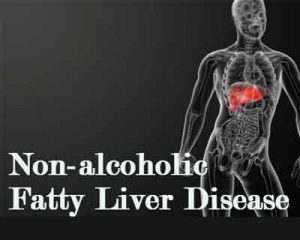- Home
- Editorial
- News
- Practice Guidelines
- Anesthesiology Guidelines
- Cancer Guidelines
- Cardiac Sciences Guidelines
- Critical Care Guidelines
- Dentistry Guidelines
- Dermatology Guidelines
- Diabetes and Endo Guidelines
- Diagnostics Guidelines
- ENT Guidelines
- Featured Practice Guidelines
- Gastroenterology Guidelines
- Geriatrics Guidelines
- Medicine Guidelines
- Nephrology Guidelines
- Neurosciences Guidelines
- Obs and Gynae Guidelines
- Ophthalmology Guidelines
- Orthopaedics Guidelines
- Paediatrics Guidelines
- Psychiatry Guidelines
- Pulmonology Guidelines
- Radiology Guidelines
- Surgery Guidelines
- Urology Guidelines
Low sugar diet notably improves nonalcoholic fatty liver disease in boys: JAMA

Scientists at University of California San Diego School of Medicine and Emory University School of Medicine found that a diet low in free sugars like occurring naturally in fruit juices significantly improves nonalcoholic fatty liver disease (NAFLD) in adolescent boys. The study has appeared in JAMA.
NAFLD is the most common liver disease in children and is associated with type 2 diabetes, end-stage liver disease, liver cancer, and cardiovascular disease.
The study included 40 boys ages 11 to 16 with diagnosed NAFLD. The participants were randomized into two groups. Half of the boys, along with their families, were provided with a diet low in free sugars (less than three percent of daily caloric intake), and half ate their usual diets for eight weeks. Reducing sugars in the diet involved decreasing glucose, fructose and sucrose commonly consumed in sweetened foods and beverages and in naturally sweet fruit juices.
Researchers interviewed the participants and their families, took inventory of the food in their home and removed food that did not meet study requirements. The research team helped the families plan meals, grocery shop, cook and prep meals. The diet was for the entire family and was designed to be as similar as possible to their regular diet, minus the sugar.
"With more than five million children having NAFLD, this is a disease that is much more common and serious than most people are aware of. An effective treatment is crucial for long-term health," said lead author Jeffrey Schwimmer, MD, professor of clinical paediatrics at UC San Diego School of Medicine. "Although there is enormous controversy about diet, we know that sugar can play a strong role in the development of liver fat. Our study targeted free sugar based on a combination of the biology of NAFLD and the real-world practicality of a diet that is achievable and that could be an effective treatment."
"Although pediatric guidelines for managing non-alcoholic fatty liver disease recommend a healthy diet, focused reduction of sugary foods and beverages was an unproven treatment," said senior author Miriam Vos, MD, MSPH, professor of pediatrics at Emory.
The study sought to measure a change in liver fat at baseline and after eight weeks of therapy, based on magnetic resonance imaging proton density fat fraction measurement -- a state-of-the-art method to quantify lipids in the liver that was developed at UC San Diego. The researchers found that the boys in the low-free sugar diet group had a reduction in liver fat of 31 per cent on average, while the boys in the typical diet group showed no improvement. Blood test measures of liver inflammation also indicated significant improvement for children in the low-free sugar group compared to the typical diet group.
"The substantial improvement seen in just eight weeks makes us believe that a diet low in free sugars has the potential be a clinically relevant treatment," said Schwimmer. "The next steps will be to take what we have learned and test this approach in a way that empowers families to control the diet themselves for a long enough time to see if we can effectively treat NAFLD and prevent cirrhosis, liver failure and liver cancer."
For more details click on the link: http://dx.

Disclaimer: This site is primarily intended for healthcare professionals. Any content/information on this website does not replace the advice of medical and/or health professionals and should not be construed as medical/diagnostic advice/endorsement or prescription. Use of this site is subject to our terms of use, privacy policy, advertisement policy. © 2020 Minerva Medical Treatment Pvt Ltd